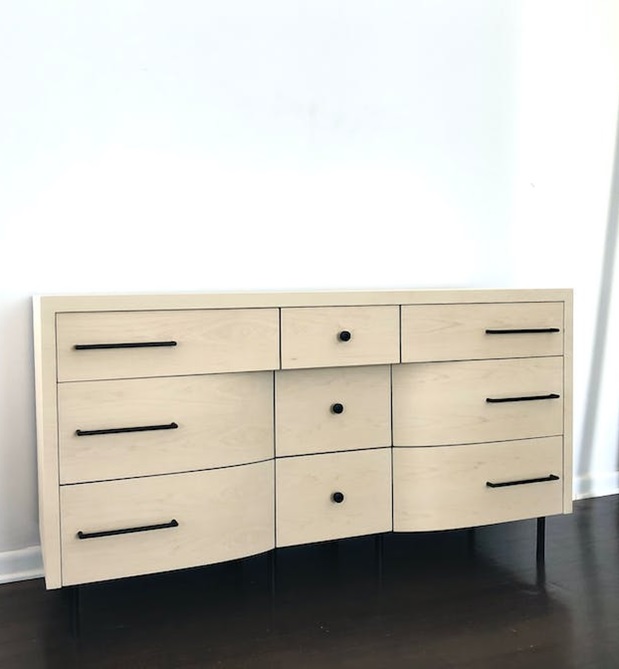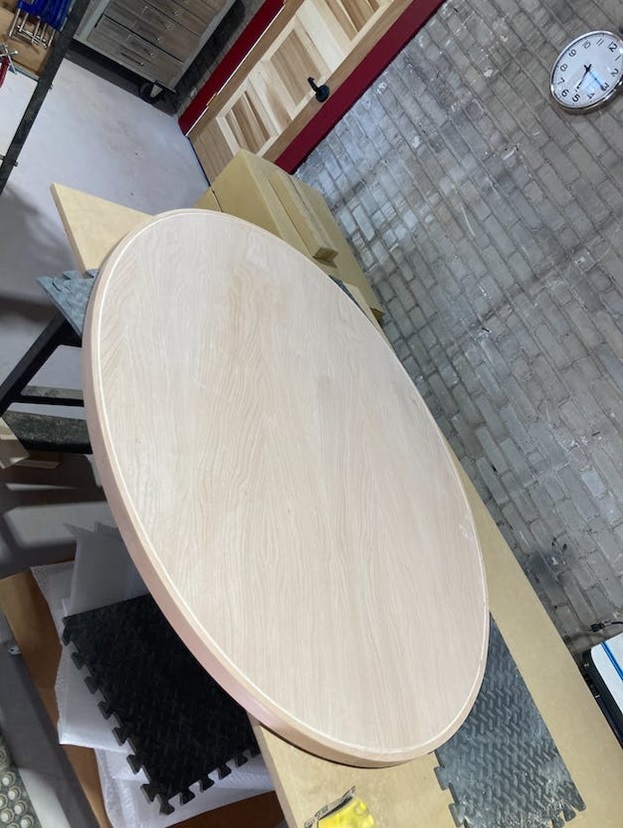Top Affordable Veneers by Species
Nov 3rd 2023
You may already know that wood veneer can be an extremely economical way to get the most out of your investment in a woodworking project.
Much more affordable than solid wood and in many ways, easier to work with, wood veneer is ideal for many projects.
Yet, the affordability of wood veneer can be stretched even further by choosing to work with a species that is inherently affordable - like one of these.
Pine, Spruce, and Fir
In the lumber industry, there is a term called “SPF,” further subdivided into Eastern and Western SPF.
We’re not talking about “sun protection factor” here. We’re talking about “spruce-pine-fir.” Throughout North America, these classes of softwoods are harvested in such quantity that often no marketable distinction is drawn between them once the wood is processed.
Species like balsam fir, white spruce, and lodgepole pine grow in such abundance in North America that once harvested they are lumped together into one softwood catch-all: SPF
So, as you might imagine, many of our most affordable wood veneers are softwood species like these, although we do break them out by species.
Granted, not all of our spruce, pine and fir veneers are particularly cheap, but by comparison to many exotics, they are. Some of our more affordable species and cuts are knotty pine, quartered yellow pine, white pine, and Douglas fir.
Price is not the only thing that makes these species attractive. They are, collectively, also fairly soft woods and relatively forgiving, easy to cut, sand, and finish, even for those that have very little to no woodworking experience.
Bamboo
Bamboo is another marvellously affordable species that can be used to create large projects relatively economically.
This is largely due to how easy it is to grow and propagate bamboo. It requires minimal care to grow large crops of bamboo and some cultivars grow with amazing abundance and rapidity, in some cases, as quickly as two feet per day. This is because bamboo is not technically a “wood”; it is a large and prolific grass.
Bamboo also matures rapidly. A stock of bamboo can be ready for harvest in as little as 3 years after planting. Compare this with a white oak tree, which usually takes 80 years or more before it is considered harvestable.
All of these factors come together to make bamboo remarkably affordable, which makes it a choice wood for veneer workers on a budget.
Also, we sell a variety of unique bamboo cuts here, including natural and carbonized planked and vertical bamboo veneer.
Poplar
Poplar may technically be a hardwood, but it’s on the softer end of the spectrum. This makes it less suitable for building structures than its stronger, harder counterparts, like oak.
That means other woods command more premium prices where poplar remains fairly cheap, and, if you’re choosing it for veneer, there are a few other advantages that go with it.
For one, you’re not choosing wood veneer for strength and structural integrity, you’re choosing it for aesthetics, and poplar has a light, white grain color that accepts a wide range of stains and finishes well. Like maple, poplar tends to splotch when stained, but a wood conditioner can help with that.
Poplar is also fairly soft, which makes it easy to cut, sand, and finish pretty easily. It’s not a tough wood to work with, even if you have little experience.
So, not only is it cheap, but it’s easy to work with, too, making it a top choice if you’re new to wood veneer and want to get started on a budget.
Maple

Maple veneer is also relatively affordable, but it has a lot of advantages. For one, maple grows relatively quickly for a hardwood - once trees are about 10” in diameter they can be harvested, which takes around 40 years.
But maple is not simply fast-growing and affordable. It is an exceptionally hard, durable wood. Consider red maple’s Janka hardness of 950 and hard maple’s Janka hardness of 1450, which is harder than both red and white oak.
As a result, maple is both tough and durable and can stand up to heavy use and traffic. This also makes maple edge banding a choice option.
Moreover, maple wood is often richly figured. Curly maple and flame maple are beautiful, chatoyant grades of maple that are often used to produce furniture, musical instruments and gun stocks.
Another thing about maple is that it is naturally a very light, almost bright white wood. While it has a tendency to splotch when stained, when properly finished and conditioned, maple can be stained in a wide range of colors from red to almost black, giving it the appearance of much more exotic, much more expensive species.
Beech

Beech is generally less expensive than its close cousin, oak, but it retains basically all of the same virtues.
Beech is generally as strong, hard, and flexible as most species and cuts of oak, and it even has a very similar color and grain structure to them - in some cuts of beech, you can even see the “flecks” of medullary rays, which constitute a figure so highly prized in oak.
Ash
You’d think that ash would be fairly expensive, especially considering the challenges our native stocks are currently facing, but all things considered, ash remains fairly affordable.
Also, ash is very strong and flexible, making it an excellent choice for those who need durability. Ash is also relatively easy to finish and its light color makes it a prime candidate for staining. Better yet, unlike maple (which is similar in tone and color) ash is not likely to splotch when stained.
Looking for High-Quality Bamboo Veneer or Maple Edge Banding
Looking for high-quality bamboo or pine veneer or maple edge banding for your next project? All of these species are fairly affordable and most are easy to work with and pretty durable, too.
Check them out via the links in this article and if you have questions get in touch with us at 800-426-6018.
